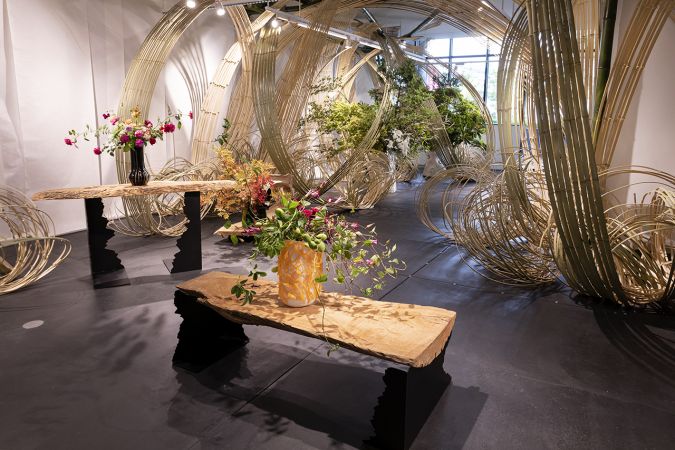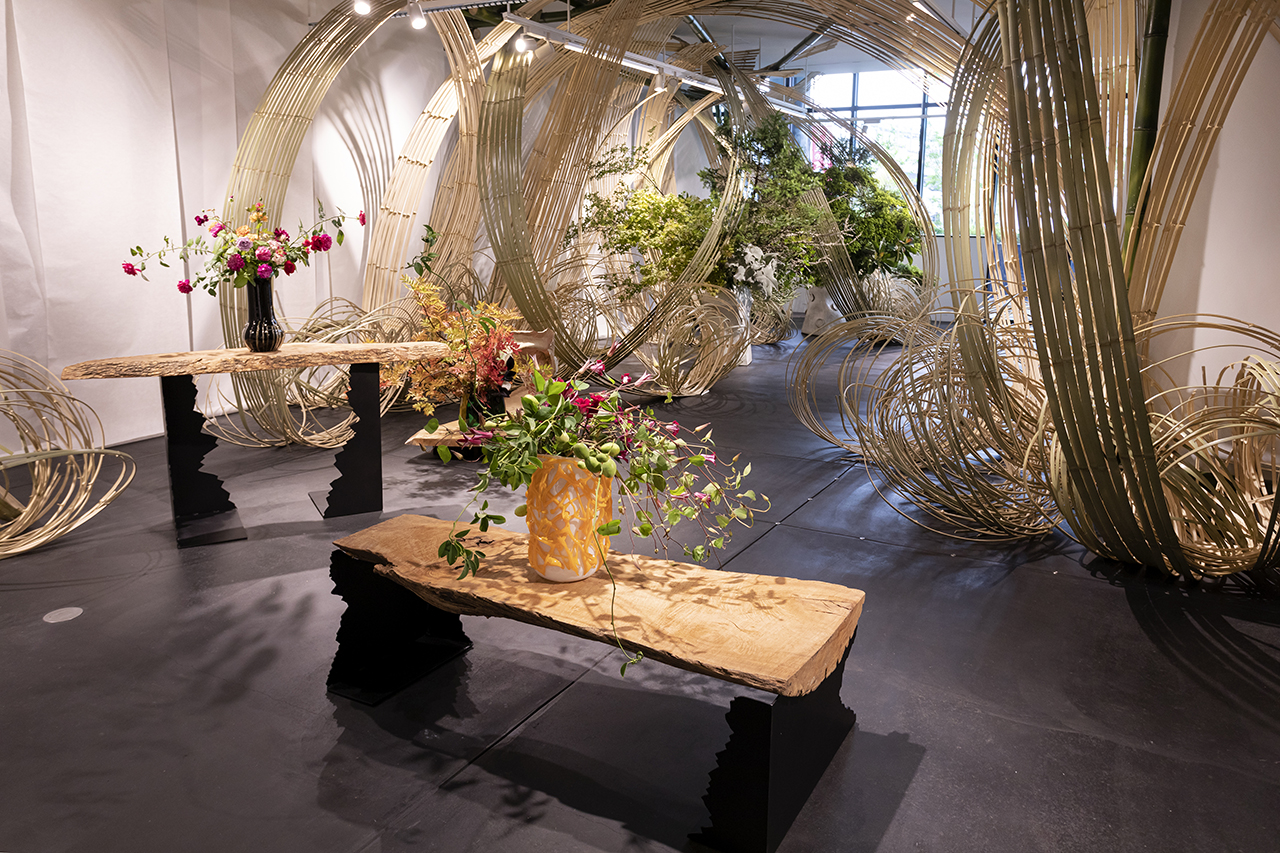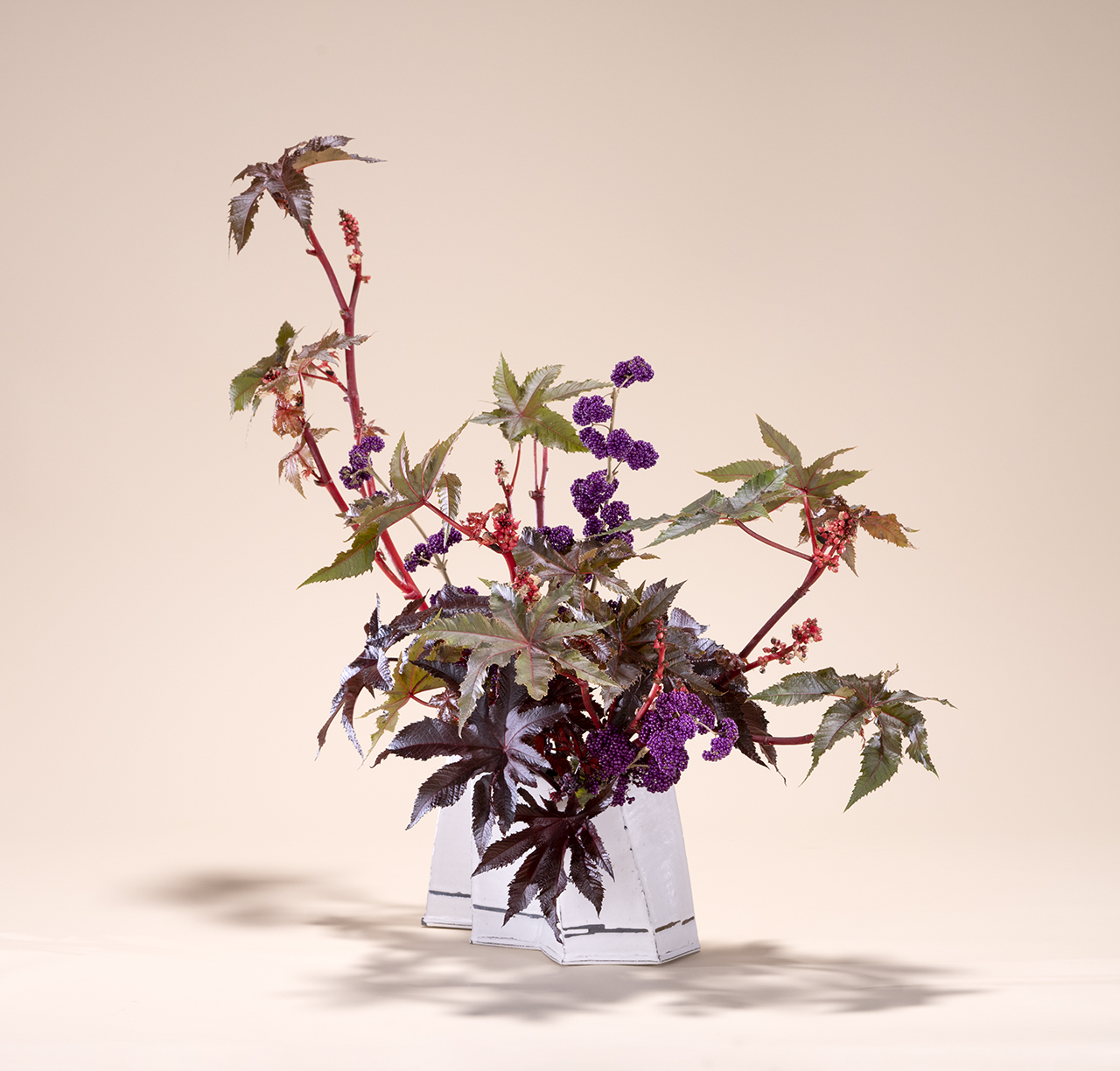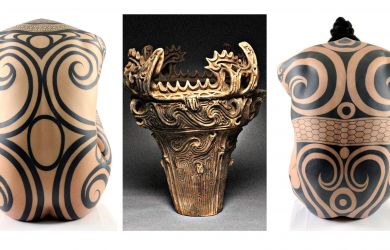
September 5, 2023
Ikebana as a Branch for Connection
Suisho Higuchi reflects on ikebana in the modern world
By Abi Buller
Suisho Higuchi, a Tokyo-based ikebana teacher, has carried the art of flower arranging throughout her life—having practiced for the past 50 years. Outside of the classroom, she applies the principles of ikebana to her daily life: by appreciating natural elements and building mental resilience. More than that, it has helped her find friendships in a foreign land, through the Sogetsu School of Ikebana, and continues to be the bridge for developing connections with younger generations. Metropolis sat down with Higuchi to hear more about her life-long relationship with ikebana and the importance of transferring the cultural tradition to today’s youth and generations to come.
Metropolis: What are your earliest memories of ikebana?
Suisho Higuchi: I started ikebana lessons when I was 12 years old, but it has been a part of my life since I was even younger because my aunt was an ikebana teacher. I remember seeing her teach my mother, but I didn’t think she was very skillful – and thought I could challenge myself to make more beautiful arrangements than my mother could!
M: When did you start teaching it?
SH: I moved to Houston in the U.S. when I was 25 years old and started teaching it soon after. There is a branch of Sogetsu (ikebana school) in Houston, so I became an assistant teacher there. Part of the reason why I wanted to teach there is because it gave me a sense of community and helped me make connections, even though I couldn’t speak much English at the time. It was such a valuable experience, teaching local people how to appreciate and arrange flowers, and what I learned throughout my six and a half years in the U.S. came to enrich the rest of my life.

M: How do you feel when you’re doing ikebana?
SH: Ikebana is a very specific art, where you need to keep just enough flowers and branches combined together to make something beautiful. As I’m working, I’m always thinking about how I can create the right sense of harmony. Because of this, there are times when I feel excited and happy by the process and there are other times when I think to myself ‘I can’t do it!’
But, overall, I think it is a very good practice for the mind and for mental strength. It also helps me appreciate the world around me. Because, as I’m walking around each day, I’m always noticing the shapes and movements of trees or flowers and thinking about how I can use them for inspiration.
M: Why is it important to teach young people the art of ikebana?
SH: If we don’t teach it, then the practice of Japanese cultural traditions will continue to decline. It is important to inspire the next generation to continue learning and teaching ikebana. Also, I have first-hand experience with how ikebana can create friendships and community in both local and international settings – so I want young people to experience this too.
M: Do you enjoy teaching young people?
SH: Yes, so much! I currently teach at two high schools in Tokyo and I really enjoy it. Young people are full of energy, so they make me feel happy and energetic too. I always look forward to seeing what they can achieve with their flower arrangements, but I also look forward to seeing them grow as humans. It’s so nice when I work with the same young people across a few years and I get to witness them growing up.

M: What’s it like when you see your students’ finished flower creations?
SH: It’s such a wonderful feeling. It takes a lot of hard work and patience to create ikebana, so it’s normal and expected to not be very good in the beginning. But, after a few sessions, students start to get the hang of the process. Even with the more experienced students, there are always a few small adjustments I ask them to make. After these tweaks, when there is finally nothing left to fix, I see the students’ faces light up and can feel how proud they are that they created something beautiful.
M: How do you think the practice of ikebana will develop in the future?
SH: This is a difficult question to think about because it seems quite obvious that the number of young people who will carry on Japanese cultural traditions is decreasing. And the same goes to ikebana. I believe that there are very few people who dislike flowers though, so I think it’s important to boost awareness and think about the appeal of flower arranging in new ways.
A lot of ikebana creations are very contemporary now, which I think is helping. Occasionally there will also be a ‘boom’ in interest if a famous person chooses to do an ikebana workshop or if it’s featured in popular culture like anime or manga. Things like this are good, but there also needs to be a way to sustain more long-term interest.
M: What else do you like about Japanese culture?
SH: I appreciate the seasons that we have in Japan. And also the trees that we have here. I’ve been to some other countries where I didn’t notice very much nature or nice trees, so it made me feel very grateful for the trees here.
Images: courtesy of sogetsu.or.jp







